|
https://ift.tt/2X6vivq
14 Social Media Best Practices You Should Follow in 2019 https://ift.tt/2Yd2MVu So much to do on social media, so little time. And so many ways to do it, too. Some right, some not-so-right. But don’t worry, we’ve got you covered with the following must-follow social media best practices. Bonus: Get the step-by-step social media strategy guide with pro tips on how to grow your social media presence. 14 social media best practices for 20191. Learn everything you can about your audienceThe first social media best practice? If you don’t know who your audience is, you can’t give them what they want. And then they won’t give you what you want (their business). Who are you trying to connect with? Millennials, single moms, kids with kanines? That’s a start, but get as specific as you can to best engage them. Do the research and rely more on data, less on your gut. Get clear about your current customers, too. So you can go find and make new ones with the same traits. Such as:
Other tactics to consider for learning about your audience include:
Want to dive deeper into this topic? We have a guide to conducting audience research that includes a template to help you build customer/audience personas. 2. Choose which networks to use (and which to ignore)Because too many marketers spread themselves too thin across too many networks. How do you determine which networks to show up and share on? Research the demographics. This will help you determine which networks to use—and which to lose. These are the kinds of insights you should be looking for: Instagram demographics
Facebook Demographics
Twitter demographics
I think you get the idea. Know more about your audience and who uses what social network and combine those two data points to better sell your brand. 3. Have a planHave you created a social media strategy, summarizing what you want to do and achieve on social media? Yes? Good job. No? You should. Why? To know whether you’re succeeding or failing for every post, share, like and comment. This guide will walk you through each step of crafting a winning plan. But here are the highlights: Set goalsOtherwise, how do you know what’s working, what’s not, and what to change as you create and share content? And, track useful metrics. Here’s a few.
Social media KPIs are also worth tracking. Conduct an auditGather and examine what’s working and what’s not on social media in one place. This will help you plan what to do more of, what to improve, and what to stop. Easily see:
And… ask yourself a few (honest) questions about your social accounts:
Use your answers to decide which accounts are worth keeping, or ditching. Need help setting up your audit? We’ve got a template for you. 4. Keep an eye on the competitionBecause if you don’t, they’ll get the upper hand. Also, to learn from what they’re doing, to help you decide what you should (and shouldn’t) be doing. Why reinvent when you can circumvent? For your social media competitors you want to know…
Do some intel to ask and answer…
There are tools and techniques to help with this (and a template to organize your findings). Competitors can give great inspiration for your social media activities. Heck, I’ve contacted and befriended many copywriters. We share war stories about losses and victories, along with tools, approaches, and ideas for doing and being better. You could (should), too. 5. Listen for mentions of your brandKnow what people are saying on your social media channels. If you do—you can track, analyze, and respond to those conversations. If you don’t—you’re missing out on valuable insights for your business. Social listening is a two-step process. 1. Monitor channels to capture mentions of your brand, competitors, product, and relevant keywords. Like… Respond to a happy customer (or to a troll). Test one campaign against another. Or significantly shift your brand voice and tone. Learn how people think about you, compared to the competition. Is a competitor taking a beating in the press? Could that be a golden moment to share, show, or say? Beat the competition to discover and resolve pain points. Is someone talking about their feature that sucks? Can you quickly add a new feature that doesn’t? Identify influencers and advocates. Is someone out there saying something superb about you all? Maybe it’s time to collaborate with them. Listen, learn, and earn. Here are some tools to help you listen on social. 6. Monitor conversations that are relevant to your industryLike social listening, social monitoring is about knowing what people think of your brand. There are tools to help you know: who’s mentioneding your brand, using which hashtags, and other trends in your industry. Think of social monitoring as the foundation for social listening. Monitor to learn from the past. Listen to create your future. Does this picture help?
About those tools? Here are some of the best social monitoring tools we found or used. 7. Establish your social media voice and toneI’m going to blatantly plagiarize the start of this piece—word for word. It’s okay, I wrote it. Every time you talk, write, design, post, respond, launch, thank, and connect with others… you’re exercising your brand voice. Every. Time. Whether you think about it or not. People are building up an impression in their mind for all the ways you appear—online, on stage, on the phone, or in person. Don’t you think it’s best to be deliberate about all that? To convey the voice and vibe for your ongoing message? So that your fans, followers, readers, listeners, leads, prospects, and customers ‘get it’? Here are some ways. Find your adjectives to develop the voice and vibe for your brand’s personality. I supplied a list for you to start (and end) with. Write like you talk by avoiding jargon. Jargon requires brain calories for readers to translate. But they won’t, they’ll just click elsewhere. Write from the reader’s perspective, to make them, not you, the hero in the story. Be clear so readers will know what they will get from what you do. Drop the drama. Avoid sensational headlines. Always be clear over clever. This forces you to understand the reader and write more to them. There are more tips and examples in the full post. 8. Follow the social media ‘Rule of Thirds’Why? First, let’s talk about what to share.
Now, back to the why (for the ⅔ sharing). Sharing out content shows your followers…
Simple, right? 9. Respond to all comments and @mentions—promptlyBecause when you don’t, it makes you look lazy, unwilling, and all about you. So get off your podium and into the dinner party—by welcoming, listening, and encouraging conversation. Like a good host. When you’re on a podium, you orate—one-way communication. Bonus: Get the step-by-step social media strategy guide with pro tips on how to grow your social media presence. Get the free guide right now!But at a dinner party, you converse—two-way communication. Social media + comments + mentions + respond now (not later) = a relationship. Here’s an entire guide to social media engagement to form healthier relationships for your social media accounts. 10. Don’t repost the same message across networksI get it, posting the same (exact) message across your social channels seems efficient. Why reinvent (or rewrite) a piece multiple times versus one time? But, like tip number nine above, reposting is another way to look lazy and sloppy. Instead, craft a new message for every network and post. Yes, it takes more time and work. But maybe not as much as you think. No need to start from scratch—but do make some tweaks. It will pay off because people will see you as a brand that cares what it shares. And it shows that you’re paying attention. Optimize content for each network. Tailor some things for your channel. Use the right vocabulary for your captions. It’s easy to imagine words that work on Snapchat may not have a chance on LinkedIn. And use the right (vs same) hashtags for each platform. If not, you’ll look spammy. Don’t over post. Post regularly? Absolutely. Overposting may be hard to do on Twitter, but easy to do for Facebook and LinkedIn. Different audiences have different tastes. Know them all to appeal to them all. Ignore some channels. Just do. Because sharing a cool new product might rock on Pinterest, but flop on LinkedIn. 11. Use data to determine when and how often to postWhen is the right time to post? It depends on the social network. People might be on LinkedIn during regular workday hours, but Instagram is more of a leisure time platform. We have an entire article dedicated to finding the best times to post on social media. It’s back by data from the best brands on social. Now, how often should you post? That’s hard to say, in general. But, create social media reports to track results for who’s engaging with your brand and posts. So you can make your choices based on data, not hunches. 12. A/B test your messagingA/B testing (a.k.a. split testing) allows you to test small variations of your messaging to learn what works best for your audience. How?
They key—change one thing at a time. Otherwise, you’re back to guessing if you change multiple aspects of the message. What to test, you might be thinking? Post text. Consider some of these for your A/B testing:
Here’s how Ikea did it.
Call-to-action. CTAs are critical, you’re asking readers to take an action. Change it up to see what works best. For example, ‘Use App’ versus ‘Install Now’. Easy to do, easy to see results. Use of image or video. Research shows images and videos perform best. Fine, but which of those work best? Try it and see, to go from theory to proof for your posts. For instance, test:
There’s more to A/B test. Much more. See our complete guide. 13. Use the right toolsThere’s loads of tools and apps to do social media right. Of course, there’s the major networks like Facebook, Twitter, YouTube, and Instagram. You need to start there—at least with the ones that are right for your brand and target audience.. Then you can look to apps to take your posts and content to the next level. Here’s a few:
Check out the rest of the tools to create, share, track and adjust your social media campaigns. 14. Measure results and adjust your strategy as neededFor your social media… Have you identified your goals? Then defined the right metrics? Same for your KPIs? Yes? Nice one. Then your next step is to determine if you’re earning more than you’re spending on social media. By gathering data from your accounts and campaigns to track and improve performance—analytics. We wrote the complete guide to using social media analytics tools. I’ll give you the highlights below. Facebook has an analytics dashboard. Use it to view likes, followers, reach and engagement for your pages and posts. Notice the changes before and after a campaign.
Want to boost some ads, but not sure which ones? Use the Promotions section to figure that out. There’s more, but you get the idea. Twitter also has a dashboard to look at information, month-to-month. Like, top tweets, followers, and mentions. See too, engagements, impressions and promotions for your tweets for a given time period.
Twitter also shows demographics for your audience. Use this to compare your audience and how they differ. Instagram offers analytics for business profiles. More than just content, gain insights about who your followers are, when they’re online, and more.
For your account understand:
You’ll find similar dashboards for LinkedIn, Pinterest, and Snapchat. Use these tools to see what’s working and what’s not, so you can see and adjust to get more of the former. There you go. Some tools, rules, and clues for making your best practices common practices. Do social media better, faster, and smarter with Hootsuite. From a single dashboard you can schedule and publish posts, monitor relevant conversations, engage the audience, run ads, measure results, and much more. Try it free today. The post 14 Social Media Best Practices You Should Follow in 2019 appeared first on Hootsuite Social Media Management. Social Media via Hootsuite Social Media Management http://bit.ly/1LdunxE June 26, 2019 at 08:10AM
0 Comments
Leave a Reply. |
�
Amazing WeightLossCategories
All
Archives
November 2020
|

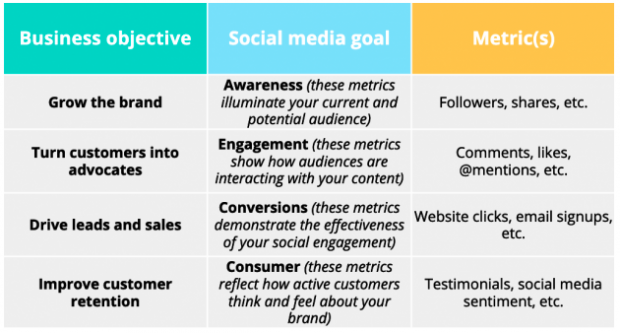
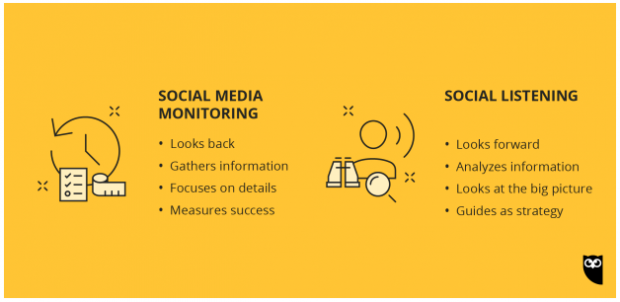
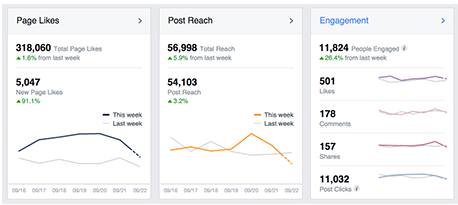
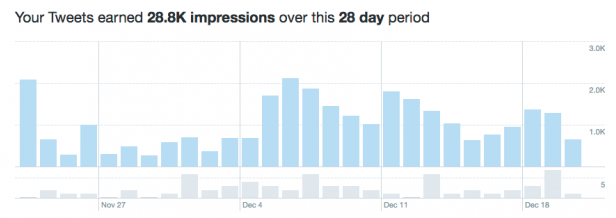
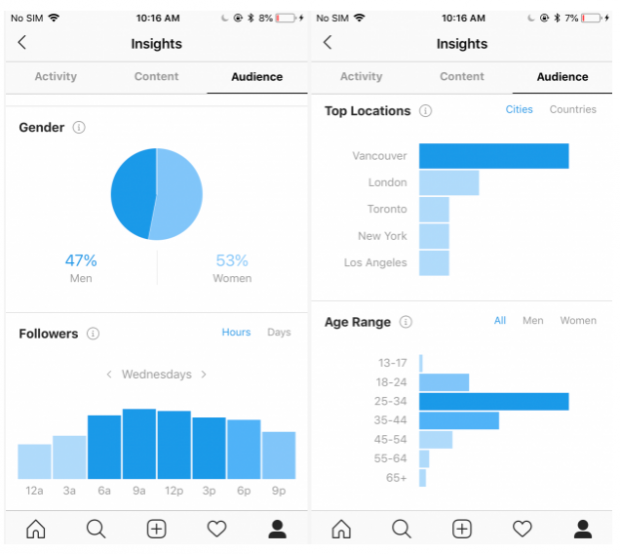

 RSS Feed
RSS Feed
